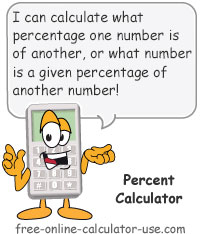IMPORTANT: Numeric entry fields must not contain dollar signs, percent signs, commas, spaces, etc. (only digits 0-9 and decimal points are allowed).
Click the Terms tab above for a more detailed description of each entry.
Step #1:
Select the number of decimal places you would like the solved missing variable to be rounded to.
Step #2:
Enter any two of the three percentage formula variables.
Step #3:
Click the "Calculate Missing Variable" button, which will display the calculated missing variable along with a pie chart for visual reference.



Follow me on any of the social media sites below and be among the first to get a sneak peek at the newest and coolest calculators that are being added or updated each month.